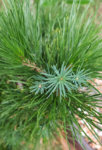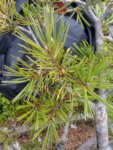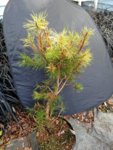Clicio
Masterpiece
It's Spring here in South America and some needles of my cascade red pine are turning yellow on the tips.
New growth (this year's) is blue/green with no yellowing; but old needles have visibly damaged tips.
I have searched online, and at other bonsai forums, but apparently could be from "normal" (old needles) to "killer fungus" (the tree will die any moment).
Any tips ? (no pun intended)
Thanks in advance!
Here below is the Bonhe graph, helpful but not in my case, and below that are examples of my tree at various angles .
Thanks @bonhe !




New growth (this year's) is blue/green with no yellowing; but old needles have visibly damaged tips.
I have searched online, and at other bonsai forums, but apparently could be from "normal" (old needles) to "killer fungus" (the tree will die any moment).
Any tips ? (no pun intended)
Thanks in advance!
Here below is the Bonhe graph, helpful but not in my case, and below that are examples of my tree at various angles .
Thanks @bonhe !







